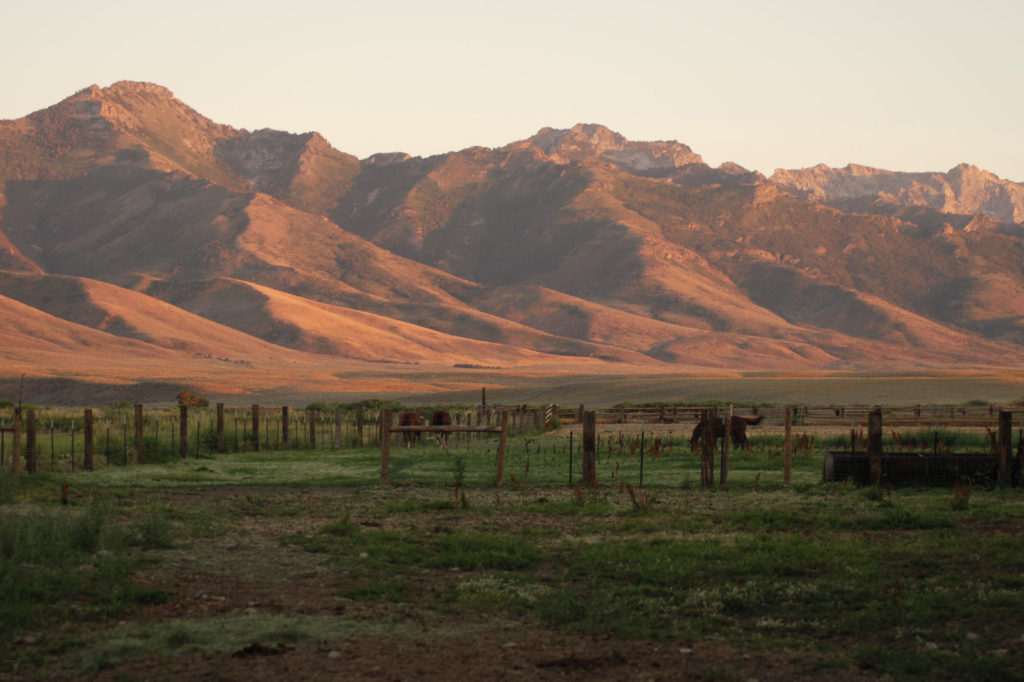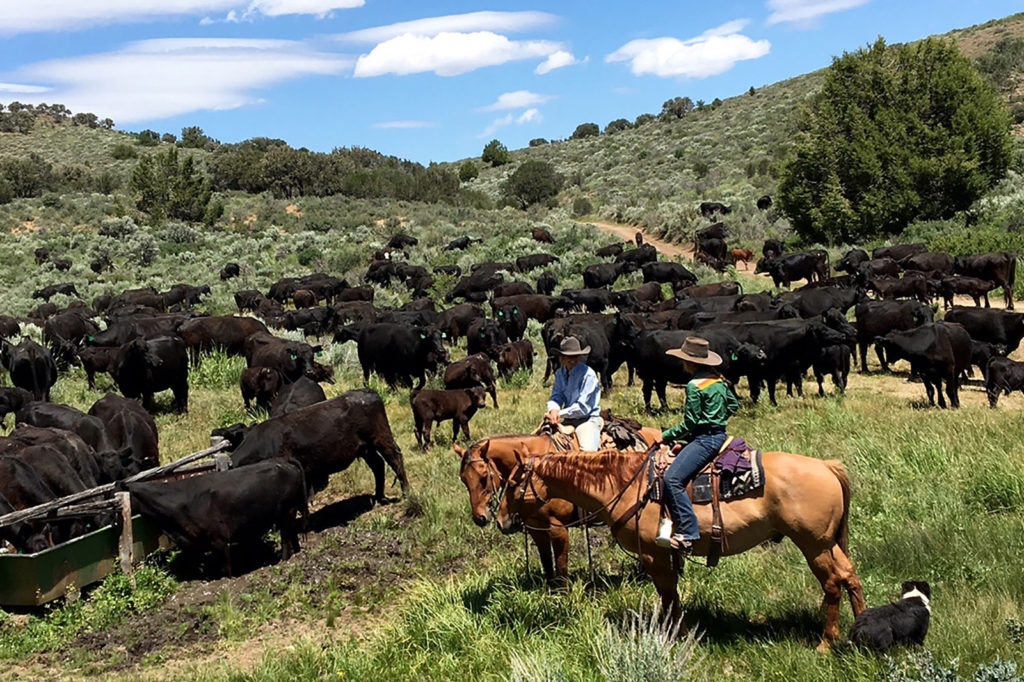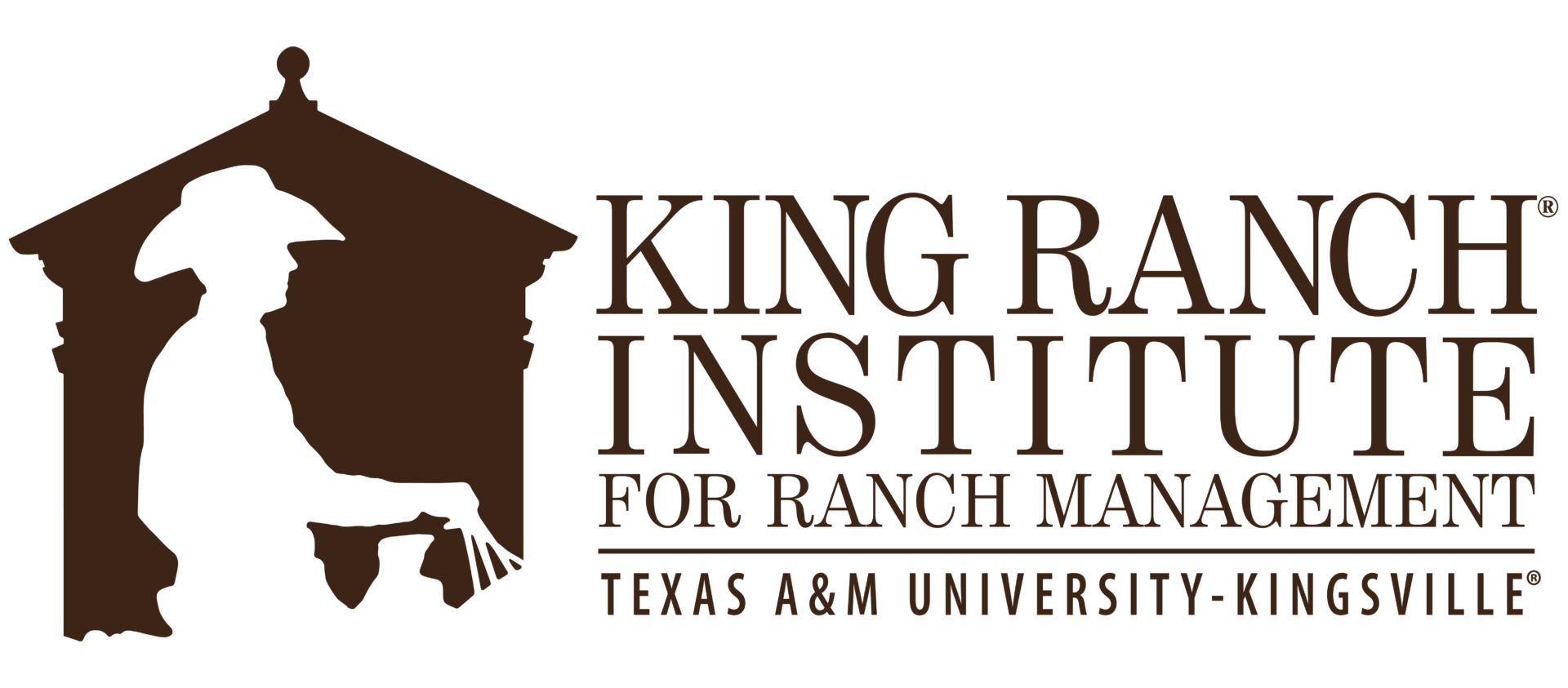Reflecting back on a 111-year history of family heritage, hard work, and perseverance, Peter Ellison humbly hopes that Ellison Ranching Company will remain alive and thriving to see another 100-year celebration.
By Ashley Patterson, published in the KRIRM Fall 2021 Newsletter
A Century-Old History
Ellison Ranching Company sprawls across more than two million acres in the Elko and Lander counties of Nevada. Since Peter Ellison’s great-grandfather Ephraim P. Ellison founded the ranching operation in 1910, alongside multiple other enterprises he established in Utah and Canada, the ranch has grown to one of the largest cow-calf operations in the United States. In a family history book To Build, To Create, To Produce. Ephraim P. Ellison’s Life and Enterprises, 1850-1939, published in 1997 and written by William G. Hartley for the Ellison Family Organization, Peter was quoted describing E. P. as “a man of vision” and an “empire builder” who would not spend his later years in life slowing down.
That vision and drive led to the establishment of three ranches and a farming operation in Nevada. Today, the Ellison Ranching Company is headquartered at the Spanish Ranch, and also includes the PX Ranch, 71 Ranch, and the farm Fish Creek Ranch. Operating on 156,000 deeded acres and 2 million acres of federal land with grazing permits from the Bureau of Land Management and the United States Forest Service, the cow-calf operation runs roughly 15,000 total head of mostly black Angus cattle (8,500 mother cows) and 8,000 head of Rambouillet sheep. The company also recently invested in a packing plant and owns a feedlot, both located in Idaho.
Peter, who began serving as a director for the ranching company in 1978 and has served as president since 1988, tells of the ranch’s history and current businesses with a sense of pride and admiration for the rich history of legacy and work ethic. He explains that the smart, business-minded family members and board of directors helped the company reach its success today by establishing reserves and managing the operation with zero debt. This strategy helped the ranch persevere through the hardships of the Great Depression and everything Mother Nature sends their way.

“I think the challenges we face are like every ranching operation. We have droughts—and we’re in one right now—range fires, cattle prices, bad winters, just the normal kinds of things,” says Peter.
Peter recalls reading minutes from director’s meetings dating back to 1910. “They were talking about the very same problems we are.”
But through the hardships, E. P. saw the ranch through to success in the early days, paving the way for the ranch to build on that success and thrive for more than 100 years.
Today’s Ranching Operation
In the National Cattlemen’s Beef Association 2020 report of the top 25 largest cow-calf operations in the United States, Ellison Ranching Company came in as number seven, right after Padlock Ranch Company of Wyoming.
Ira Wines, general manager of Ellison Ranching Company, oversees every aspect of the cattle, farming, feedlot, and sheep enterprises, including management of 60 full-time employees and contract hay labor.
Wines began working for the company in 2004 as the Buckaroo Boss at the Spanish Ranch, and moved into his current general manager position in 2017. The greatest challenge facing the ranch right now, says Wines, is the drought. Usually July and August are the hardest months of the year, even when they aren’t experiencing a drought, because the cattle must work harder. Adding a drought to the already hot and dry conditions of the summer makes for a tough situation to overcome, but Wines says they are used to the challenge and is optimistic for a positive future.
The ranch is gearing up for the fall work, which usually begins in September when the crew brings the cattle down from the mountains to wean calves. Using century-old traditions, this looks similar to how the crews worked at the ranch’s beginning in the early 1900’s, loading branding wagons and gathering a group of calves to work and brand before moving on the next. Most weaned calves will be sent to the Idaho feedlot in October, while one ranch will winter calves before sending to the feedlot. Cows will be palpated and settled in for the winter; a Bureau of Land Management permit allows the ranch to winter 500 cows and everything else is fed native meadow hay through the winter.

Wines explains that one feedlot raises the ranch’s 2,000 replacement heifers and he hopes 1,700-1,800 of those heifers get bred. The other feedlot is used to background steers that will sell in late spring.
“The last few years, we’ve started finishing some of those steers, retaining ownership of them until they are hanging on a hook,” explains Wines. “We’re going to try to finish a few more cattle in the future but the drought will slow that process down.”
Last year, about 3,700 steers were sent to the feedlot and the ranch finished a total of 1,500 steers and open replacement heifers.
Genetic Improvements
For the last 10 years, Wines says the ranch has implemented an AI program to improve the genetics of the cow herd. The ranch is capitalizing on hybrid vigor by artificially inseminating straight black heifers to a Hereford bull to produce black baldies.
“Our goal is to still make cows that work in northeast Nevada, but have offspring with performance and growth in feedlot,” says Wines.
The ranch also AIs a group of cows specifically to raise bulls that have growth and carcass characteristics but maintain a moderate framed cow. The older cows in the AI group are sent to a packing plant south of Boise, Idaho, with a genetics lab. There, the cow’s eggs are harvested and fertilized to make embryos that are transferred to recipient cows to improve the bull battery, says Wines.
“We DNA test the cowherd and the bulls to know exactly what bulls we’re making to improve in maternal or growth traits,” explains Wines. “We use bulls to complement the moderate cows.”
Of all the responsibilities and aspects of Wines’ job as general manager, he says he is most excited about the AI program and the recent embryo transfer program. The first calves from the embryo program are on the ground now, and it has been rewarding to see the cowherd genetics improve.
“It’s pretty exciting to watch it work.”
Since making these genetic improvements, Wines says they have seen 90% of the steer carcasses grade choice plus. Although he believes they have accomplished their goals and succeeded, he admits they can do better. Wines also enjoys the opportunities to help the crew brand and work calves.

Time-Honored History
While Peter shares the accolades of the company’s success, noting features in many prominent magazines and newspapers such as National Geographic, Life Magazine, and Wall Street Journal, he also recalls treasured memories from the summers spent as a teenager on the ranch.
“Those were very formative years as a young teenager. One of the most wonderful times of my life was working at the ranch. You’re learning a lot when you’re that age,” he says. “I loved learning to work hard….the people, country, horses, and tractors, I just loved all that stuff.”
Peter is most proud of his family heritage and his great-grandfather E. P.’s entrepreneurial mindset that helped propel the ranch’s success.
“I’m very proud of my heritage. E. P. was a real early entrepreneur in Utah. I’m very proud of the family. That’s been one of the very satisfying parts of being involved for me,” says Peter.
The image of the traditional and storied history of Ellison Ranching Company is best described by Ian Tyson in his song, “Bill Kane,” written about the Spanish Ranch. An image that invokes the legacy and pride of a century-old ranch that continues to thrive today.
“There’s an old time buckaroo outfit called the Spanish….
“There weren’t no gooseneck trailers on the Spanish….
“The big ‘ole crossbred broncs in the Ellison cavvy, they would surely take the measure of a man…”
Download the full KRIRM Fall 2021 Newsletter Issue featuring this story.


